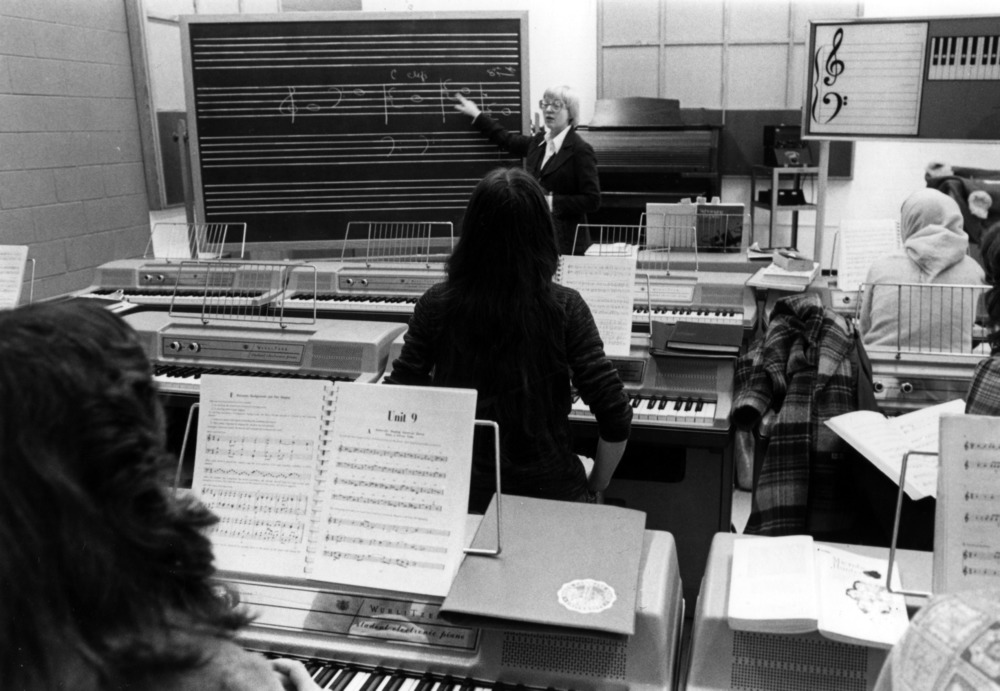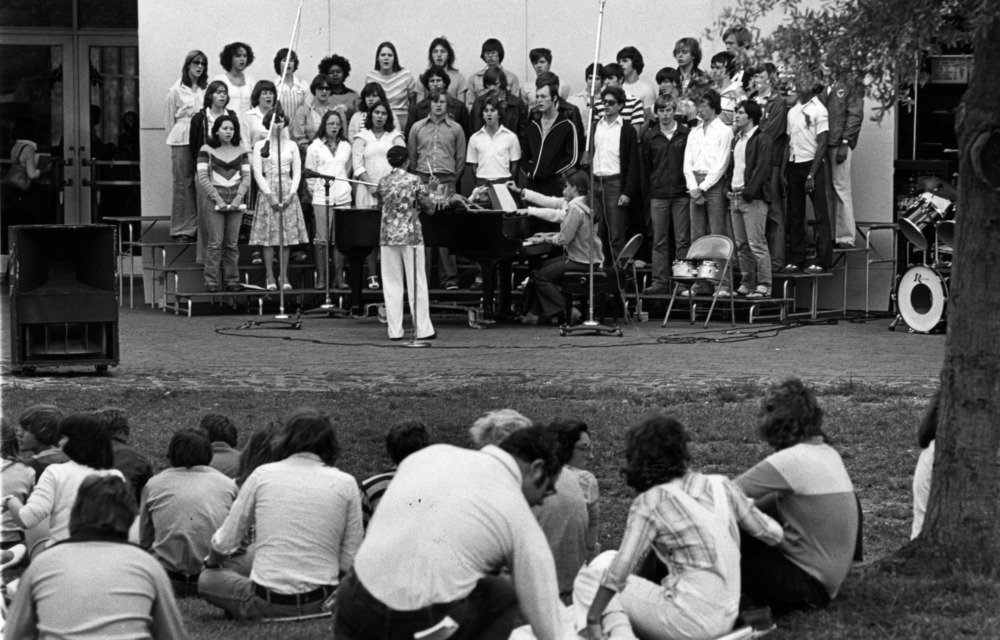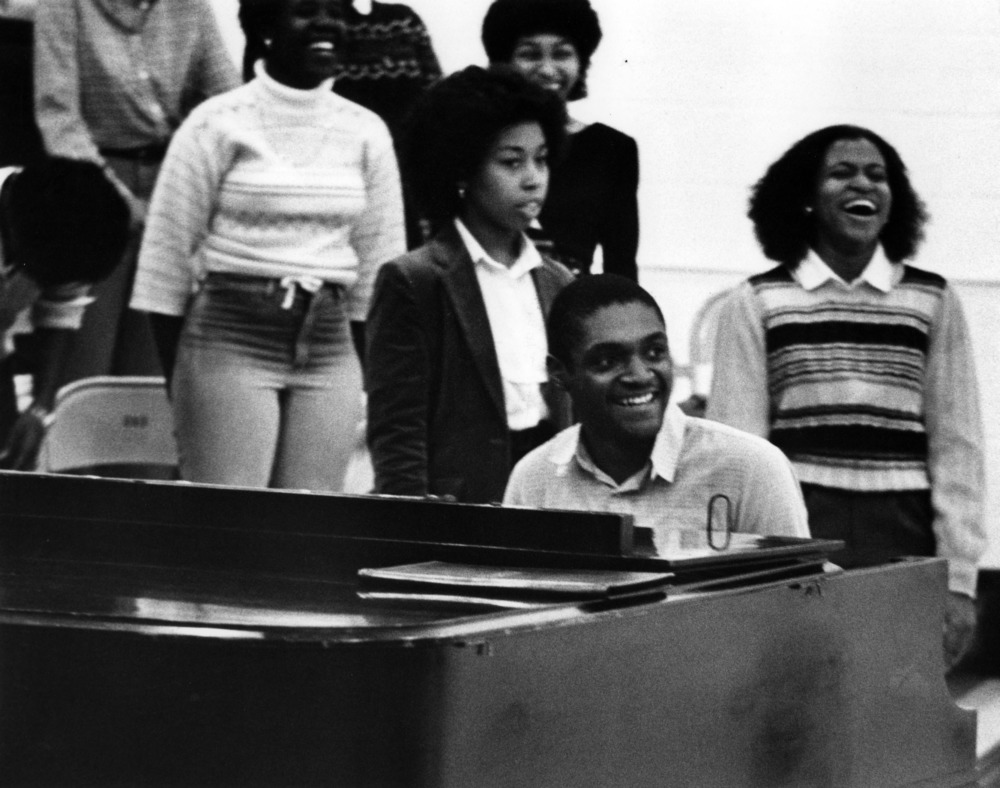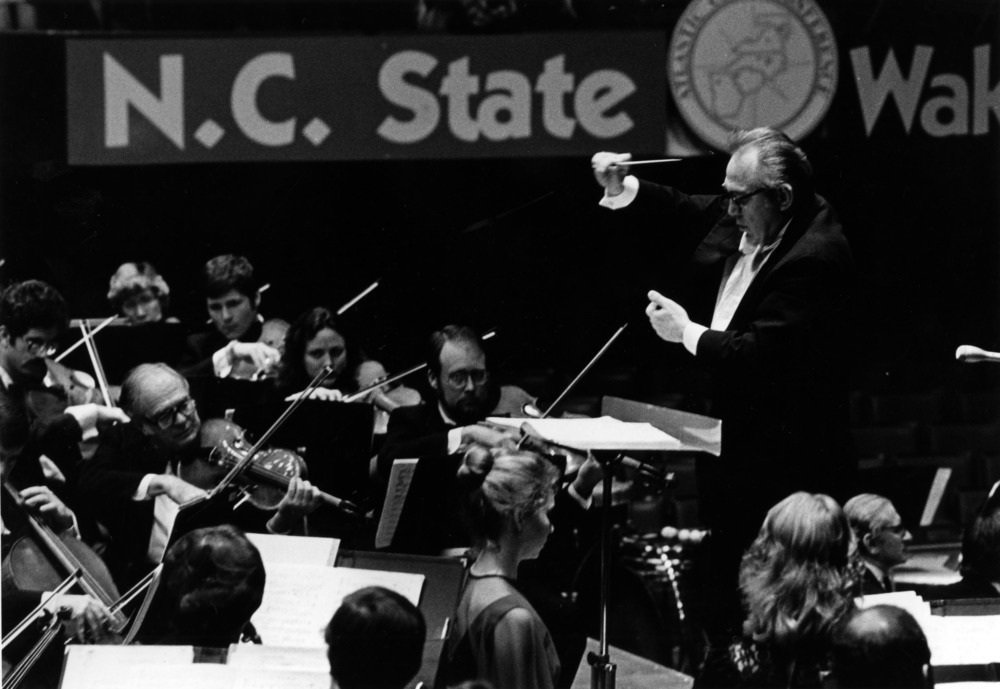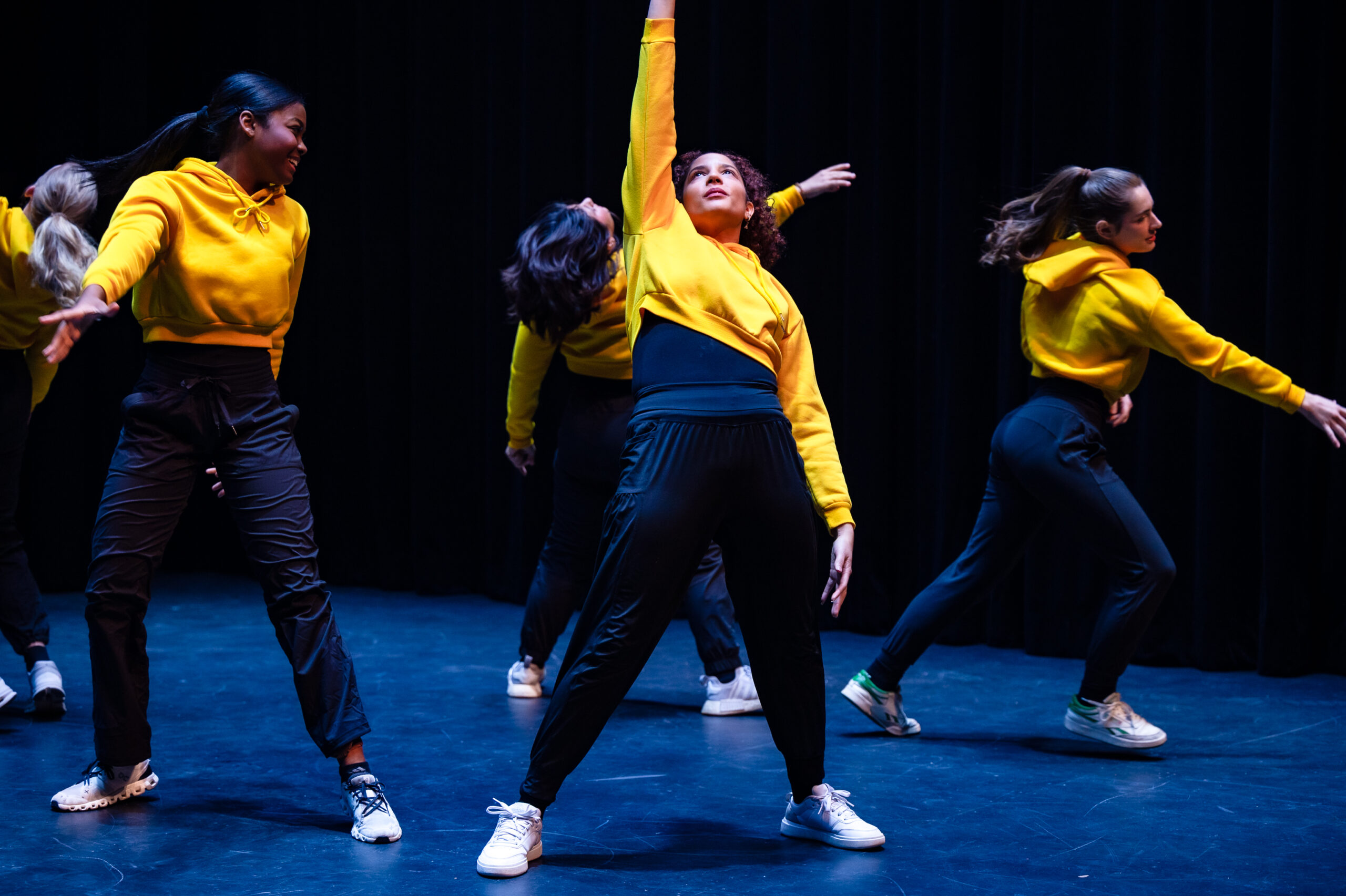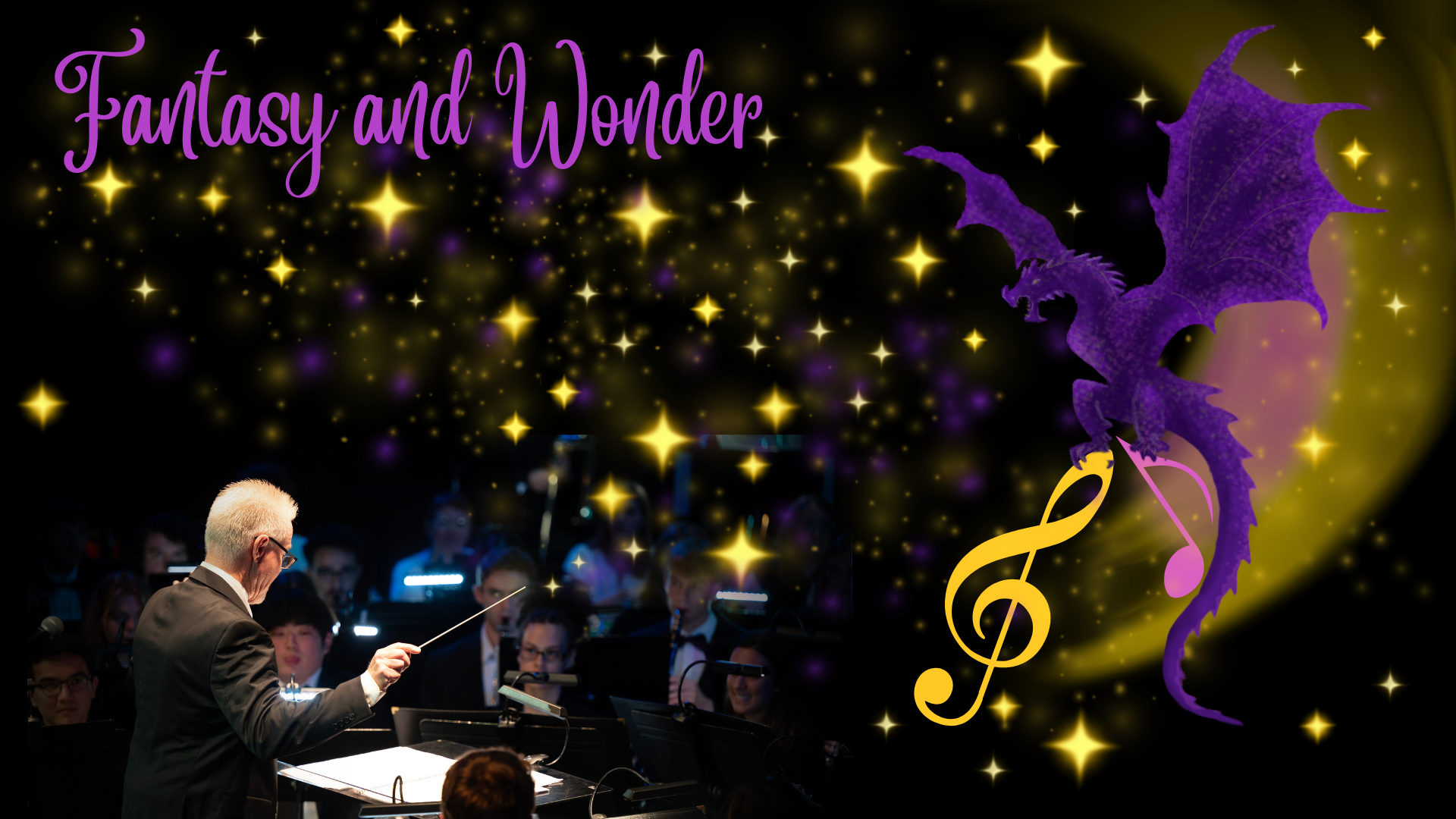Our History
The Department of Music at NC State was established in 1924, though its origins can be traced to the first drum and bugle corps, formed in 1898 to perform for the university's ROTC military parades.
Early days
In 1918, Percy W. Price, a faculty member in the textiles program, took over leadership of the State College Band on a voluntary basis and it began to steadily grow. In his first year with the band, they had 22 student applicants, and at its peak he had 186 applicants. In 1924, the music department was organized and Price was named its director.
During his tenure, which lasted until his death in 1933, Price organized an orchestra, men’s glee club, the Red Coat Marching Band, the honorary music fraternity Mu Beta Psi, a drum and bugle corps, a men’s vocal quartet, a concert band and the existing ROTC band.
The department’s third director, Robert Barnes, arranged for the music department to have space in Pullen Hall in 1955, for rehearsals, practice rooms, offices and storage, and to perform in the ballroom of the newly constructed student union. Barnes and the director of the student union, Gerald Erdahl, founded the Friends of the College concert series in 1959, with programs presented in Reynolds Coliseum. Friends of the College quickly grew to be the largest season subscription concert series in the world with 16,000 annual members. The series ran from 1959-1994, with 226 concerts featuring artists such as international and national symphony orchestras, opera companies, the Duke Ellington Orchestra, Itzhak Perlman, New York City Ballet, Westminster Choir, and many more.
Barnes involved the students of Mu Beta Psi in recruiting and training students to play the carillon in the Memorial Bell Tower every weekday at noon, as well as occasional recitals. The instrument itself was housed in the basement of Holladay Hall and the music was broadcast via speakers from the bell tower.
During the tenure of music director J. Perry Watson (1960-1989) the university’s enrollment grew from 6,510 to 27,577, and the music department grew from four faculty to ten. In 1965, an arsonist set fire to Pullen Hall, in addition to at least ten other fires on campus, and the music department lost everything. More than 300 band instruments, four pianos and $15,000 worth of sheet music were destroyed along with the department’s facilities.
The Price Music Center years
As a result of the fire, the first building on campus designed and built specifically for music was able to be named in honor of our first director of music, Percy W. Price. When Price Music Center opened in the early 1970s, Watson leveraged the new facilities to dramatically expand the department’s curricular offerings. He had a state of the art Wurlitzer electronic piano lab installed in Price 101, and the department began offering music theory and class piano. With the influx of new faculty, other new programs such as an artist series were introduced.
In the 1960s and 70s, the orchestras were reorganized into a university/civic symphony orchestra, and the choir program expanded from just the Men’s Glee Club to include the University Choir, the New Horizons Gospel Choir, the Chamber Singers and the Grains of Time, under the direction of Milton Bliss, Eleania Ward and Phyllis Vogel. Additional a cappella groups were founded by students in the 1980s, 90s and more recently. The jazz bands were introduced in the 1980s, under the direction of Dr. Frank Hammond.
The music minor curriculum was established in the 1990s by director Dr. Ronald Toering (1989-1994). Today, the minor offers two tracks in performance and general studies, and we also offer a minor in arts entrepreneurship. Our course offerings have grown to more than 60, and we teach and support more than 20 performing ensembles or student organizations.
A look back
Photos of the evolution of the music department at NC State
The Power Sound of the South
There have been six marching bands at NC State:
- The ROTC Band
- The Drum and Bugle Corps
- The Red Coat Band
- The Marching Band
- The Pipes and Drums
- The Power Sound of the South
During the years in which the band was an ROTC band, the directors Percy Price and Christian Kutschinski were given the rank of Major, as is common practice for faculty involved in ROTC programs. Students in the ROTC Band and the Drum and Bugle Corps were in the university’s military training program and the bands wore army uniforms.
The Red Coat Band so named for the red coats of their uniforms played for football games and non-military parades in the Raleigh area. When Robert Barnes took over the program, enrollment in the band was up to 170 student-musicians and the name was changed to NC State Marching Band. The majorettes and flag corps (now called twirlers and color guard) were introduced to the band in the 1960s. At that time, the band was the largest in the ACC, and took considerable pride in its half-time shows.
The name Power Sound of the South® was introduced by Dr. Douglas Overmier in the mid-1990s. The band has since appeared in every ACC stadium, several professional football stadiums, a promotion for Walt Disney World, and bowl games. The band now includes the twirlers, color guard, drumline and dance team, in addition to the brass and woodwind instrumentalists, and marches more than 300 students each fall.
School songs
The NC State Alma Mater
Music by Bonnie F. Norris, Jr.
Lyrics by Alvin M. Fountain
Arranged by Robert A. Barnes
The NC State alma mater was composed in 1925 by NC State alumni Bonnie F. Norris, Jr. and Alvin M. Fountain, both class of 1923. The two were cadets in the university’s ROTC program and attended encampment at Fort McClellan, AL. To their embarrassment, all the other cadets were proudly singing their schools’ alma maters, but NC State did not have one. They resolved to fix it, and the alma mater was born. The song we sing today is a much-abridged version, arranged by former music department chair Dr. Robert A. Barnes in the early 1960s. The lyrics were updated in Feb. 2022.
Where the Southern winds so softly blow, o’er the fields of Caroline;
There stands ever cherished NC State as thy honored shrine.
So lift your voices loudly sing from hill to ocean side;
Our hearts ever hold you NC State, in the folds of our love and pride.
Fight Song
Music by John Philip Sousa (Trio from “The US Field Artillery March”)
Lyrics by Hardy Murphy Ray, 1926
The fight song is a staple performed by our athletic bands.
Shout aloud to the men,
Who will play the game to win.
We’re behind you,
Keep fighting for State.Hold that line, hold them fast,
We’ll reach victory at last
We’re behind you
Keep fighting for State.Rise up to the fray,
And let your colors wave,
Shout out for dear old NC State
(Go State!)For where e’er we go,
We will let the whole world know,
We’re behind you,
Keep fighting for State.
Red and White from State
Music and Lyrics by J. Perry Watson
The “Red and White Song” was written by former director of the music department J. Perry Watson. The song debuted at an NC State vs. Maryland basketball game on February 13, 1961, as an alternative fight song. Although it isn’t the official fight song its lyrics are more widely known, and it is another staple for athletic events.
We’re the red and white from State and we know we are the best;
A hand behind our back, we can take on all the rest.
Come over the hill Caroline, Devils and Deacs stand in line,
The red and white from NC State. (Go State!)
